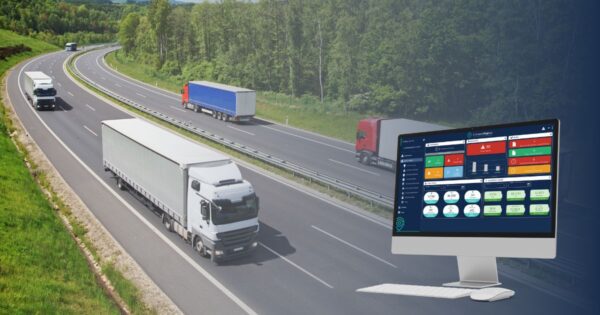In the transportation sector, we hear a lot about “zero” these days. The International Energy Agency has set a global net zero emissions target by 2050. And almost equally as important, the Vision Zero road safety program seeks to reduce to zero the number of deaths and serious injuries caused by road traffic accidents.
But are these objectives achievable? Or simply another burden on an already hard-pressed transportation sector? We believe they are both achievable but also, crucially, good for the businesses that play their part. Let’s take a closer look at each in turn.
Net zero emissions
I don’t intend to go into a great amount of detail on the well-worn subject of global warming. Suffice it to say it is happening, and greenhouse gas emissions are a leading contributor to the problem. It is generally accepted that doing nothing is no longer an option.
On the other hand, it is worth understanding what “net zero emissions” actually means, or more specifically understanding that it does not mean that no business can emit any greenhouse gases at any time. Instead, it is that across industries and the economy as a whole, net emissions are zero. So, the aim for any business involved in transportation, or just managing a fleet of vehicles, is simply to reduce emissions as low as they can possibly go.
It shouldn’t require any special insight to understand that reduced fuel use = lower emissions = less spending. So smart fleet managers are already working as hard as they can to ensure that these costs and emissions are being driven down. That can include smarter routing, management of poor driving habits, and even monitoring and reducing the amount of time vehicles spend idling.
But it doesn’t stop there. Scope 3 emissions are the next challenge on the horizon, and cover all emissions, including those generated by employees, the customer base, and the supply chain. As you can imagine, they are harder to reduce. But more and more employers are trying. In that effort, they have one great advantage: employees in particular want to take part. 74% of individuals are motivated to make changes in their lives – all they need is the opportunity.
That’s where innovative solutions (including our own MySafeDrive) help employees and customers monitor and improve their driving and reduce emissions as a result. Employees and customers want to be given the tools to improve their behavior and reduce their contribution to global warming. Yes, it’s only one part of the jigsaw – but in the move to net zero emissions, every piece counts.
Vision zero road safety
As with emissions, so with road safety – and specifically fatal accidents and those that cause serious injury. The target is zero.
To many readers, this might sound unlikely, or indeed fanciful. But perhaps that is because we have been trained to see such accidents as inevitable. In industries where safety is prioritized, such as aviation or shipping, nobody would claim that reducing serious accidents to zero wasn’t possible. It is possible we can learn from them.
Vision zero involves a number of different strands, but a part of the responsibility falls on fleet managers and individual drivers, just as it does with the drive for net zero emissions. It can be tempting to see this as yet more red tape and resist accordingly. That would be a mistake.
Accidents are expensive. In most cases, they are expensive no matter who is at fault, but they can get really expensive when the organization or individual is liable. Indeed, in some jurisdictions, serious accidents can put haulage companies (for example) out of business. Again, the incentives are aligned. Any sensible business, and any sensible individual, wants to reduce the accidents they are involved in (and definitely the accidents they are responsible for) as much as possible.
That’s why modern cars and commercial vehicles are equipped with ever more safety features to prevent them from happening. Beyond this, we at CameraMatics work with everyone from individual drivers to managers of fleets numbering hundreds of vehicles to prevent accidents from happening.
Can we get to zero?
So, can we get to net zero emissions and vision zero road safety? There’s no doubt it is a challenging target. But then targets should be challenging. Either way, we should be trying. The good news is that the effort itself is good for business. Who doesn’t want to spend less on fuel? And who doesn’t want to use the technology available to us to prevent accidents from happening (and thus save the huge amounts of money they can cost)? Nobody.
At CameraMatics, we’re proud to help individuals and businesses play their part and save money at the same time. If you’d like to join in, drop us a line.








